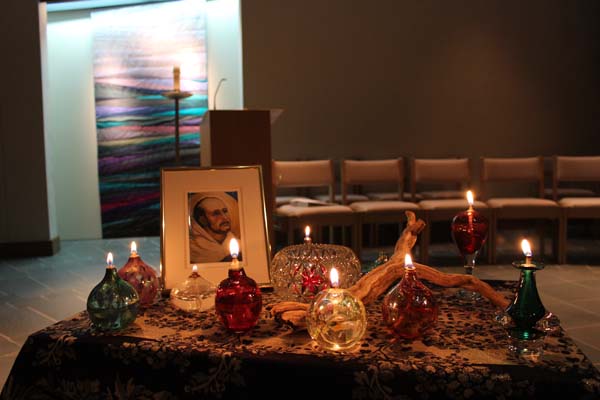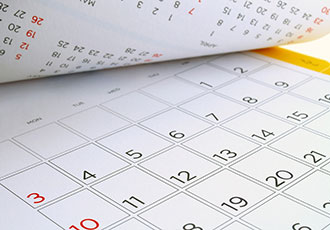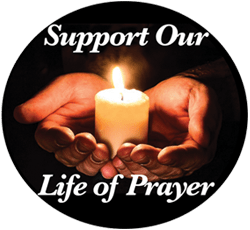The Liturgical year is the annual celebration of the events of Jesus’ life, ministry, death and resurrection. Its undulating rhythms inform and shape our life. Our seasons and celebrations, our fasts and feasts are all lived according to liturgical time.
Advent and Christmas
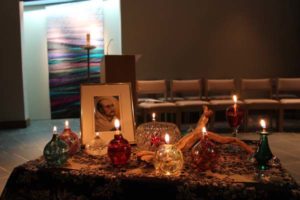 Advent is a season of hope, waiting and anticipation, whose perennial hallmarks are the lush and hopeful prophecy of Isaiah, the clarion call of John the Baptist, and the beautiful example of Mary who waits patiently in silence and hope. With these as our cloak and inspiration, we strive to build up progressively a growing thirst and a longing for the coming of Jesus Christ in our lives in ever deeper ways. Each year we prepare anew a liturgical theme and emphasis for the season in relation to the circumstances of our world, expressing the promise and hope that Christ brings.
Advent is a season of hope, waiting and anticipation, whose perennial hallmarks are the lush and hopeful prophecy of Isaiah, the clarion call of John the Baptist, and the beautiful example of Mary who waits patiently in silence and hope. With these as our cloak and inspiration, we strive to build up progressively a growing thirst and a longing for the coming of Jesus Christ in our lives in ever deeper ways. Each year we prepare anew a liturgical theme and emphasis for the season in relation to the circumstances of our world, expressing the promise and hope that Christ brings.
Ordinary Time
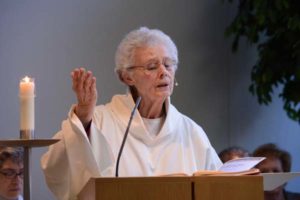 Following the Christmas season and the Easter/Pentecost cycle, some 30 weeks of the liturgical year are spent in Ordinary Time. These are graced periods calling for simple daily fidelity to our ordinary tasks and the regular cycle of prayer and work, grounded in an encounter with Jesus in his daily life, his feasting and fasting, his work of healing and teaching.
Following the Christmas season and the Easter/Pentecost cycle, some 30 weeks of the liturgical year are spent in Ordinary Time. These are graced periods calling for simple daily fidelity to our ordinary tasks and the regular cycle of prayer and work, grounded in an encounter with Jesus in his daily life, his feasting and fasting, his work of healing and teaching.
Lent
 In Lent, we join the universal church in an intensive period of prayer, penance, and fasting. As Carmelites, we take this season as an opportunity to spend more time in prayer, in silence and in solitude before the face of God. Through our liturgies, we ask those who worship with us to accompany us into the desert with Jesus, and then on toward Jerusalem. We provide special times and services for contemplative prayer and recollection, to prepare our worshipping community to enter into the remembrance of Jesus’ passion and death. We plan our liturgies around specific themes that help us encounter Christ’s passion as it is experienced and seen in the wounded people and places of our own time.
In Lent, we join the universal church in an intensive period of prayer, penance, and fasting. As Carmelites, we take this season as an opportunity to spend more time in prayer, in silence and in solitude before the face of God. Through our liturgies, we ask those who worship with us to accompany us into the desert with Jesus, and then on toward Jerusalem. We provide special times and services for contemplative prayer and recollection, to prepare our worshipping community to enter into the remembrance of Jesus’ passion and death. We plan our liturgies around specific themes that help us encounter Christ’s passion as it is experienced and seen in the wounded people and places of our own time.
Holy Week and The Great Triduum
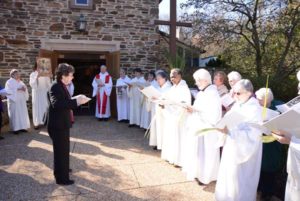 Lent culminates in Holy Week: Palm Sunday and the days of the Great Triduum: Holy Thursday, Good Friday, and the Easter Vigil. We observe the Triduum days with solemnity, silence, and attentiveness, each day offering beautiful liturgies which follow the ancient ritual of the Church. The liturgies make use of creative ritual, congregational song, our choir, and special instruments to help us enter profoundly into the Paschal Mystery of Jesus.
Lent culminates in Holy Week: Palm Sunday and the days of the Great Triduum: Holy Thursday, Good Friday, and the Easter Vigil. We observe the Triduum days with solemnity, silence, and attentiveness, each day offering beautiful liturgies which follow the ancient ritual of the Church. The liturgies make use of creative ritual, congregational song, our choir, and special instruments to help us enter profoundly into the Paschal Mystery of Jesus.
We offer Tenebrae services (traditionally held at night) in the dim light of early morning. Tenebrae is a time of deep quiet as the traditional ritual of candles, psalmody, and scripture leads us into an experience of the darkness in ourselves and our world, and our need for Christ’s redeeming love.
Easter Pentecost Season
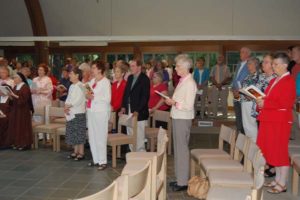 The Easter season is a fifty-day celebration of the Resurrection, the coming of the Spirit at Pentecost, the growth of the early church, and our lived discipleship. We celebrate this season, the high point of our liturgical year, with great joy and glorious hope. It is a time to let this joy and hope flow unfettered in radiant light, in energetic song, in new life as we enter into the disciples’ overwhelming experience of the risen Christ and claim it for ourselves. All this we strive to reflect in our liturgies with heartfelt praise, exuberant music, and creation blossoming forth. Even the chapel garden in beauteous splendor participates in this explosion of joy.
The Easter season is a fifty-day celebration of the Resurrection, the coming of the Spirit at Pentecost, the growth of the early church, and our lived discipleship. We celebrate this season, the high point of our liturgical year, with great joy and glorious hope. It is a time to let this joy and hope flow unfettered in radiant light, in energetic song, in new life as we enter into the disciples’ overwhelming experience of the risen Christ and claim it for ourselves. All this we strive to reflect in our liturgies with heartfelt praise, exuberant music, and creation blossoming forth. Even the chapel garden in beauteous splendor participates in this explosion of joy.
The season concludes with Pentecost Sunday. We are invigorated and renewed by the Holy Spirit’s creative energy and transforming power. We are enlivened to imagine and bring about the future to which God calls us.
